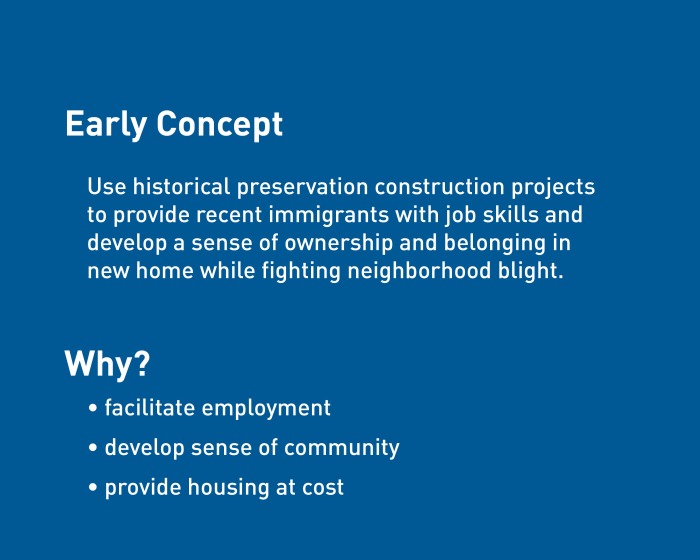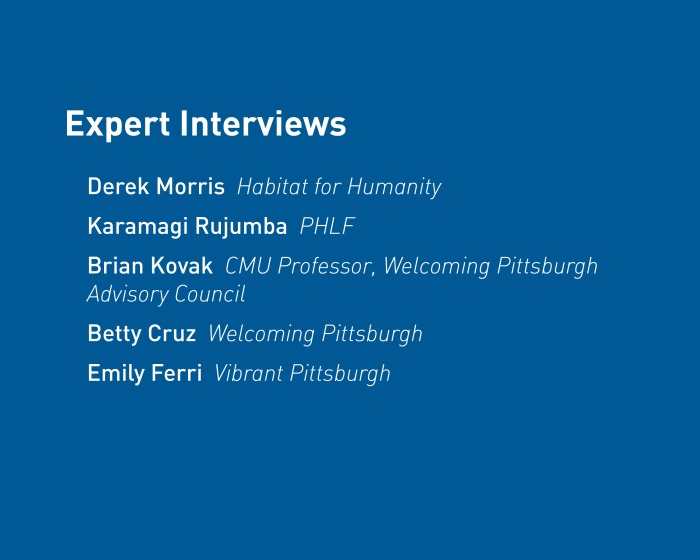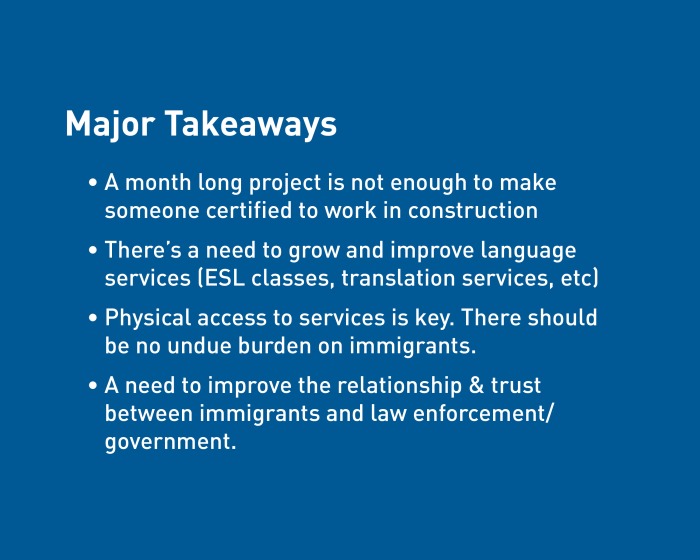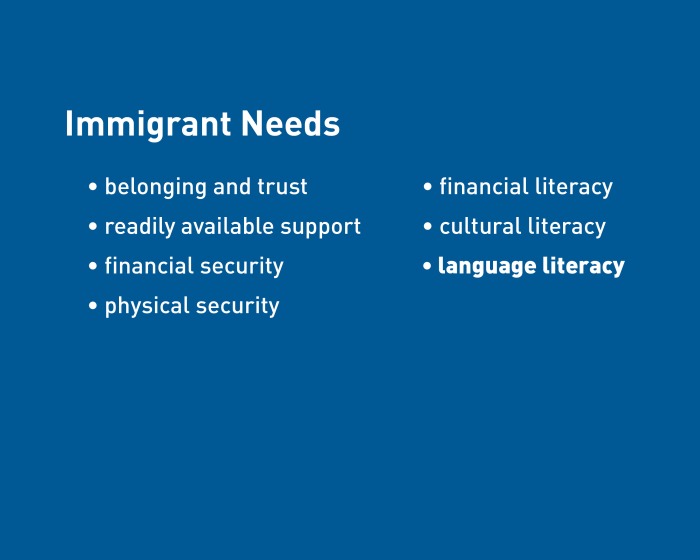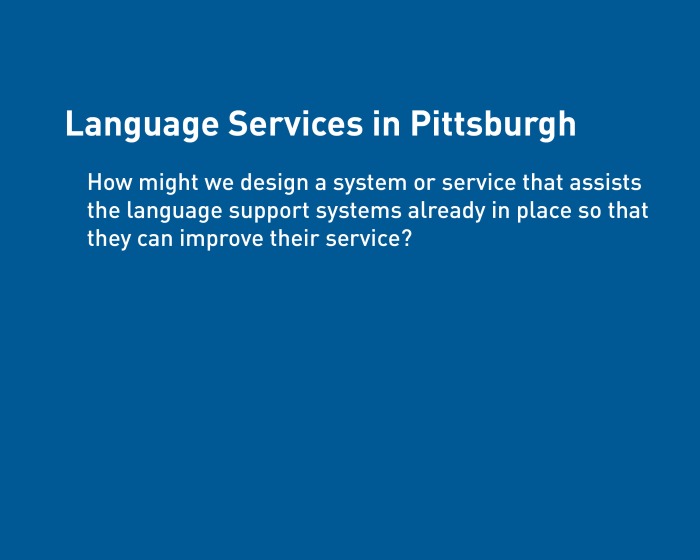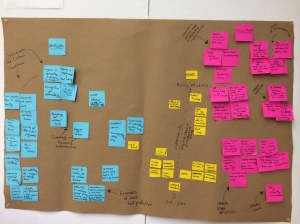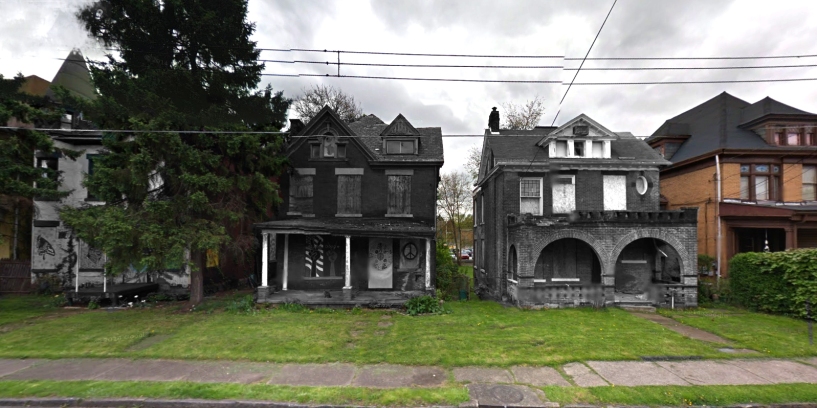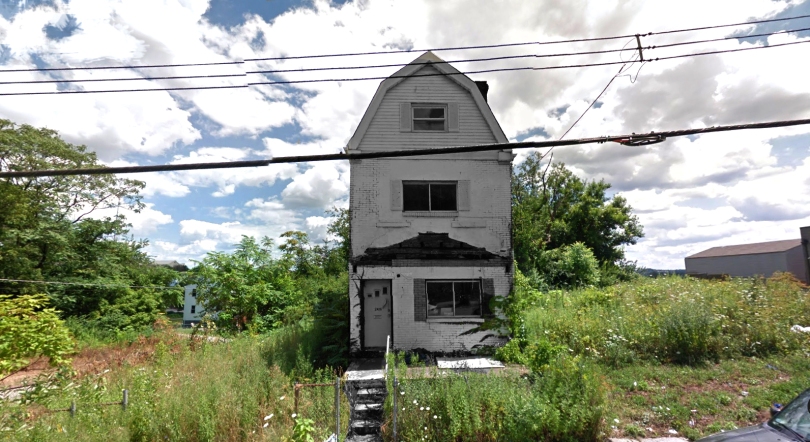Over the course of the last month, our project has shifted in scope and focus, reflecting the knowledge and experiences we have picked up in class and in our independent research. We initially hoped to design an employment skills program for immigrants, similar in format to Habitat for Humanity, that would allow immigrants to not only obtain skills useful in their job search but also develop a sense of belonging in and ownership of their new communities. Given Pittsburgh’s unique imbalance of immigrant skill levels, we figured this would help attract low to semi skilled immigrants, helping correct this imbalance and boost the local economy while better integrating neighborhoods. This idea was initially inspired by an intersection of three of the 100 Days Policies, surrounding immigrants, historic preservation and fighting general blight/neighborhood revitalization.
However, after interviewing representatives of Habitat for Humanity and the Pittsburgh Historic Landmark Foundation, we discovered that Pittsburgh doesn’t have a sector of its construction industry dedicated to historic preservation and in fact, there seems to be a very limited number of contractors and services present in the city to undertake these projects. Moreover, those that do exist, seem to lack a central cohesive infrastructure or policy process that our team could capitalize on for our service design. Thus we eliminated this aspect from our project and then directed our focus more specifically on helping immigrants establish ownership and become more integrated in their new communities and revitalising neighborhoods through an employment skills training program..
As our group followed the structure of the class lectures, we ended up developing our project somewhat in reverse. We initially focused very closely on the 100 days policies and trying to maximize the number of problems addressed. It was only in the past two weeks that classes have begun to delve into the importance of stakeholder participation and input in a project. It dawned on our group that we will need to have some close interaction with our target stakeholders (low skilled immigrants) in order to understand their needs, and then use this information to inform our project scope.
There are many categories of immigrants (such as asylum seeking refugees, human trafficking survivors, or undocumented vs documented immigrants), all of which have significantly different needs and gaps in service provisions within Pittsburgh. After a team discussion, we decided the subset of immigrants we felt best prepared to help is low skilled immigrants, potentially those newly arrived in America. Betty Cruz, of the Welcoming Pittsburgh initiative, said that language barriers were a significant challenge for our designated immigrant population. Thus we decided to focus on addressing the language needs of this group, instead of tackling the broad category of employment opportunity support.
After even further discussion of possible challenges facing this immigrant population, we began to recognize that there are many resources and services already in place for immigrants that struggle to maximize the benefit they intend to produce for this same target group. We then decided the most manageable goal for our project, given the timeline for the semester, would be to find a way to support one of these existing language support resources or services, or improve upon their efficiency, delivery, etc. For example, there are individuals and potentially organizations of translators within Pittsburgh for immigrants. However as this job requires translators to be on call 24/7 (in case of emergencies), and it is often strictly volunteer based, translators can be hard to come by and the few that do work, are overloaded and cannot address the entire needs of the population. Worse yet, when disaster strikes and emergency personnel need to interact with immigrant families, language barriers and a lack of available translators could have fatal consequences. Our team aims to identify one of these services, such as translation, and see if there is a way to support “the supporters” of our immigrant population (possibly through funding, transportation, phone/internet access, etc).
Some members of our group are spearheading research into policies governing this specific subset of immigrants and services to see if there are policy implications possible. We are in the process of outlining a new scope and project idea and so we are also in need of connections that will allow us to host some workshops with immigrant families from the local area. Several of our group members have strong ideas for activities that would allow us to extract the information needed for us to progress. Some of the design thinking research methods we intend to use in our participatory workshop with immigrants are cognitive tasks, photo collage,immigrant context rich story and love letter to capture immigrants perceptions and needs. We also intend to design comparative current and future states of immigrant experiences.
Additionally some of our group members have been planning an “interview unpacking” workshop day for our team (as we have several other informative interviews coming up in the next week or two) that should help us synthesize the bevy of information we have gathered. This will likely be a weekend day investment of time, as we will have five or six interviews to wade through. However we hope that the “take aways” we develop from this meeting will give us a concrete foundation upon which to build the more complex stages of our project/service and design our stakeholder workshops.

